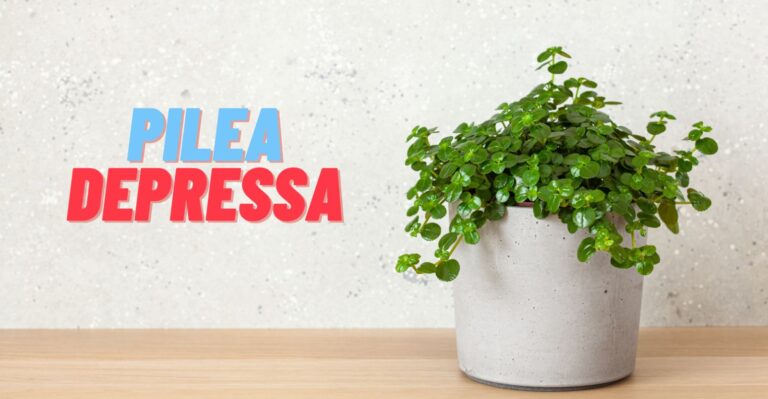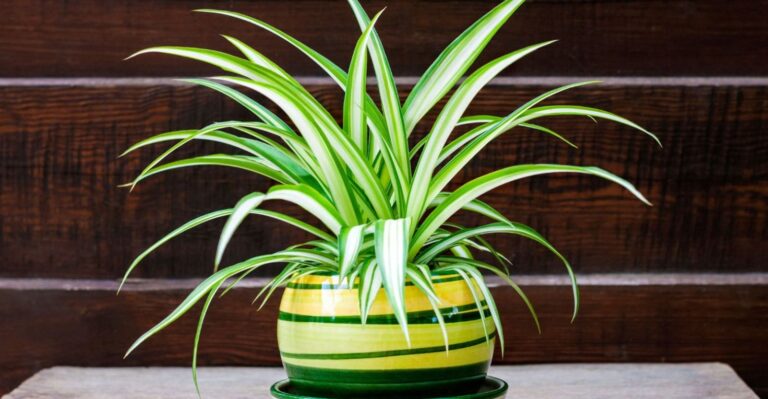Amazon has put together some great Home Gift Deals – save money and get your shopping done at the comfort of your home! Click here to see deals on Amazon
While many people grow orchids and several other indoor plants for decoration or the fragrance of their flowers, you can also grow pothos, a hardy indoor trailing plant.
Njoy pothos is easy to grow and is a low-maintenance, hassle-free way to add oxygen to your indoor environment. This beautiful plant is also drought tolerant, easy to care for, and looks great on a desk or windowsill.
Njoy pothos is a perennial vine that likes to climb and wrap itself around objects, making it perfect for hanging baskets. If that makes you interested in knowing more about this plant, keep reading.
What is Njoy pothos?
Njoy pothos (misspelled as Enjoy pothos) is the common name given to the vine known by its scientific name, Epipremnum aureum. It’s also known as Devil’s Ivy and is known for bright variegated leaves.
It belongs to the Araceae family and resembles philodendrons in several different ways. This is a beautiful perennial plant whose cultivar came from the Marble Queen Pothos and was developed by Dr. Ashish Hansoti, who also brought Manjula pothos.
Njoy pothos is known for its ability to clean air as it helps generate oxygen while removing toxic air such as formaldehyde and benzene. This makes it an excellent choice for the indoor plant where the air circulation may not be that great.
Although pothos is native to Southeast Asia and Australia, several cultivars are popular in the United States. Njoy pothos grows best in the USDA zones 10 to 11. Although it rarely blooms, its attractive leaves and ability to purify air help reduce stress and increase focus, making it popular among people.
Njoy Plant Growing Summary
| Factor | Growth Condition |
|---|---|
| Soil | Moist soil with perlite and peat moss |
| Water | 1 – 2 times a week (Summer), Once a week (Winter) |
| Sunlight | Partial Sunlight |
| Temperature | 65 °F to 85 °F (18 °C to 29 °C) |
| Propagation | Stem Cutting |
| USDA Zone | 10 – 11 |
What is the difference between Njoy, Jade Pothos, and Pearl Pothos?
Many people enjoy pothos, but they often get confused when shopping for the plant. Njoy pothos, Jade, and Pearl pothos are from the same family and share almost the same essential characteristics. These vines climb up and across your indoor wall, forming gorgeous leafy-green columns.
All these plants descended from the Marble Queen pothos, but the key difference is that Njoy doesn’t have a lot of green streaks on their leaves that are present in other pothos. Many people love the light green variegation of Njoy pothos, while Jade and Pearl contain a wider speck of green, cream, and white coloration.
Another key difference is the distance of the node among these plants. Njoy pothos nodes are closer than the Jade and Pearl pothos. The leaves of Njoy are also smaller, with several green shades on a leaf. Njoy pothos is slower growing and cold hardy than Jade Pothos.
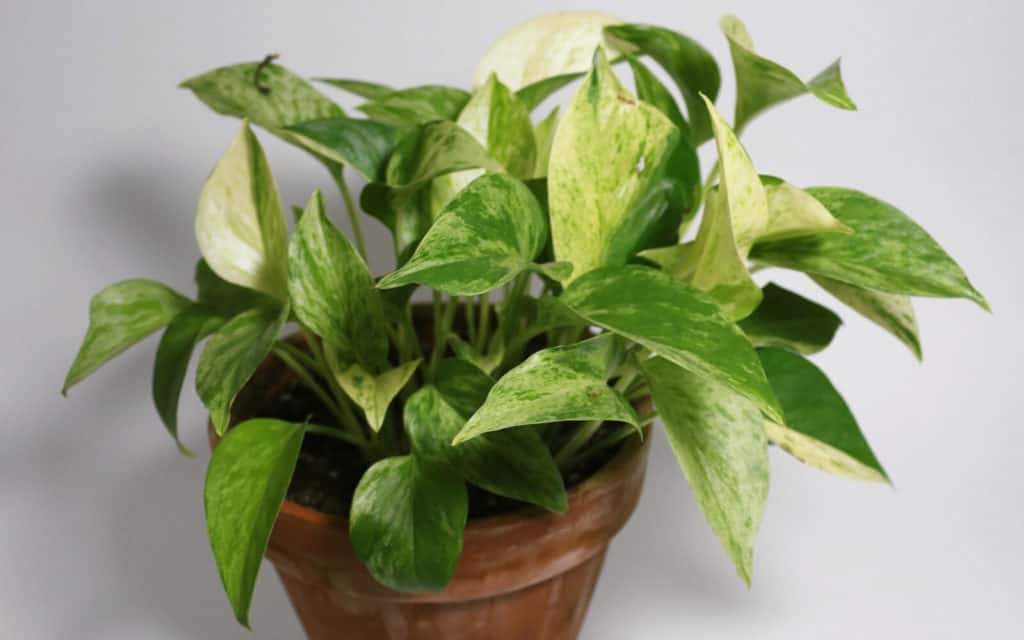
How to grow and care for Njoy pothos?
Njoy pothos plants are hardy and easy to grow, making them ideal for beginner gardeners. Pothos grows in many colors, and with little care, you can enjoy this plant for several years.
Soil Requirement
The soil requirement for this plant isn’t stringent. It can grow in most soil types if it doesn’t dry out or get too wet. The soil should be well-drained and moist but not waterlogged. You can plant in a potting mix that uses an equal part of perlite and peat.
When planting it indoors, use a pot with a drainage hole at the bottom. A clay-made pot is great for the Njoy plant as it helps maintain proper balance to retain water and drain excess water from the moist soil. You can add cocoa coir, orchid bark, and organic compost to the wet soil to provide the plant with enough nutrients and required moisture.
Njoy pothos water needs
Pothos, like other plants, needs water to grow properly. How much water it needs depends on a few factors: the pot size, the humidity in the air, and the potting material all play a role. You should water the plant when the top one-inch layer of soil feels dry.
Be careful not to overwater it as it may increase the risk of root rot. In the summer, watering once or twice a week should be sufficient for the plant. You don’t need to mist the plant for humidity unless you live in an arid area.
Sunlight
Njoy pothos doesn’t need a lot of sunlight to grow. So, if you want to grow brighter variegation of pothos indoors, you should keep it where it can receive a few hours of bright indirect light. Keep it away from the spots where the long direct sunlight exposure can scorch the delicate leaves.
The plant can be kept in low-light areas of the house, such as a living room or bedroom. But make sure to place it near windows or other natural light sources. You can also use a fluorescent light source when proving natural light isn’t possible.
Providing your pothos plant with indirect light or filtered light is the best bet, as the tropical plant will appreciate some shade. I placed mine on the South-facing wall in my home to get some indirect light, and it’s growing nicely. If your Njoy pothos has white variegation, provide it with bright light; otherwise, the leaves will become green.
Temperature
Generally, Njoy pothos prefers warmer temperatures, but they can tolerate mild cooler temperature too. They grow best in the temperature range of 65°F to 85°F (18°C to 29°C), which is suitable for most indoor plant growing.
But if you’re planting it outdoor, it can’t handle temperatures below 55°F. You should bring it indoors or provide some covering to protect it from the temperature drop. Also, keep it away from the heating or air conditioner units so it doesn’t experience extreme temperature fluctuations.
Fertilizing
Njoy pothos is light feeders as they’re self-sufficient in getting nutrients from the soil. However, providing it once a month with a liquid fertilizer or all purpose fertilizer such as NPK 10-10-10 during the spring and summer growing season gives it an extra boost for green color leaves.
Typically, you don’t need to fertilize it during the fall and winter as the plant growth slows and requires fewer nutrients to grow. Pay closer attention to any rapid development of brown spots on the leaves, as it could be a sign of an increase in the salt concentration in the soil due to overfeeding.
Pruning
The pruning needs of the pothos plant vary depending on the size of the plant, the light it receives, and how often you water it. Before you decide to prune, start by examining the leaf scars on your plant. The leaf scars are marks left by the leaf on the stem after it falls off. You can trim the stem a quarter-inch above the spot.
It’s best to use sharp scissors or pruning shears to make a clean cut. After the pruning, the plant’s stem will produce new growth centered around the scars resulting in a new, shorter, fuller plant.
Repotting
Pothos is an extensive grower, and their roots spread out quickly. Njoy pothos should be repotted every 2–3 years when their roots become pot-bound and can’t spread more.
You can know the time for repotting as the leaves start to wilt even after providing proper care. You should remove it carefully from the old pot without disturbing much old soil and place it in a larger pot.
Fill the container with a new potting mix and keep the soil moist but not soggy. But you shouldn’t use an extra-large pot either as more soil content inside it means higher moisture concentration to roots that could rot it.
Ensure the pot has drainage holes to let the excess water drain out and lightly aerate it to improve the airflow to the roots.
Growth rate
Njoy pothos can grow up to 10 feet tall, but you can keep it short with regular pruning. If you want to grow your Njoy pothos without wires, you may try growing them in a hanging basket or tabletop planter.
If you would like to plant your Njoy pothos like a vine, it will thrive much better if it has something such as a moss pole to climb.

How to propagate Njoy pothos?
Njoy pothos propagates easily from stem cuttings. It’s an excellent choice for beginners who want to learn about propagation and those with limited space for plants.
If you need more pothos plants, propagating them yourself is pretty easy, and you can save yourself the hassle of ordering or buying new plants. You don’t even need a green thumb to do this. All you need is a little patience and a decent pair of scissors.
To get started:
- Take a cutting from the stem of a mature, healthy plant.
- Ensure it has a few nodes and a couple of leaves left on the plant.
- Prepare a new pot that is only a few inches bigger than the root ball of the mother plant and fill it with potting mix.
- Insert the cutting into the soil but don’t insert it too deeply.
- Duly water the new plant and place it in a warm, bright area for rooting
- After about one month, the plantlets can be transplanted into their pots or planted outdoors in a garden bed
How to fix yellowing leaves of Njoy pothos?
Njoy pothos is a great choice for indoor decoration and outdoor gardens because of its lush green leaves from a tropical climate. However, the leaves will inevitably turn yellow over time. There are many reasons for this change to yellow leaves in the plant, but it can be fixed by following these simple steps:
- Examine the soil to ensure that there isn’t too much moisture or too little water. Root rot is the most common cause of yellowing leaves.
- Examine the leaves to see if they’re infested with pests such as aphids or spider mites.
- Give the plant an organic fertilizer every two weeks.
Why is your Njoy pothos brown?
There can be several different reasons for the pothos plant to turn brown. The most common cause is that the plant isn’t getting enough sunlight, or you have an improper watering schedule with a poor drainage pot.
If you expose the plants to direct light, it causes the leaves to get dry and lose moisture, turning them brown. You should change the plant’s location and place it where it gets some shade or artificial light.
Too little water or dry indoor condition could also turn the Njoy pothos brown. Keep up with the watering schedule and thoroughly water the plant once the top few inches of soil become dry. Avoid any excess fertilization as too many nutrients could hamper plant growth.
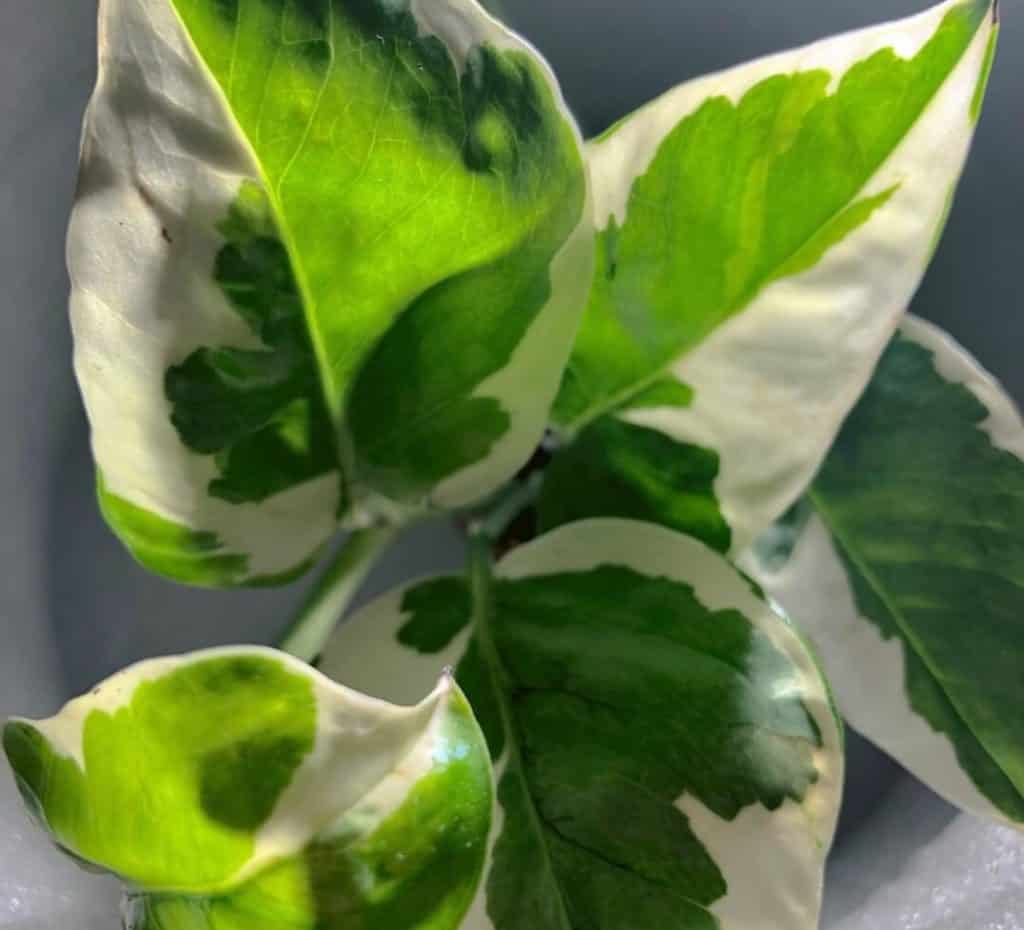
Why does your Njoy pothos have small leaves?
The size of the pothos leaves indicates how much light it gets. The smaller the leaf, the less light it can get, which means that your plant might need to be moved closer to a window or placed in a brighter room away from the direct sunlight.
The stunted growth of pothos could also result in smaller leaves. It may be due to insufficient nutrients, pest infestation, or fungal disease. You should also check the soil and inspect for the root-bound situation.
You may need to transplant the plant into a freshly prepared organic potting mix, provide enough water, and place it in a partial shade.
How to control Njoy pothos pest and disease?
Pothos are less susceptible to pests and diseases, but you should watch insects such as aphids, mealybugs, and spider mites growing on the plant.
You can use insecticidal soap or an alcohol rub to wipe clean these insects. Don’t forget to look underneath leaves and deeper in the soil where these pests usually hide.
Plant diseases like Ralstonia solanacearum bacteria could attack the roots and weaken the plant. The common signs are dropping and falling leaves, brown leaves, and unhealthy stunted plant growth. To save it, you should repot the plant in fresh potting soil after disinfecting the branches and roots of pothos.
Is Njoy pothos toxic to pets?
Pothos Njoy belongs to the aroid family of vining plants, and like the other species, it’s toxic to pets. The toxicity depends on the quantity the pet has ingested. The stems and leaves of Njoy contain calcium oxalate crystals that can irritate when they contact skin or mucous membranes. Take your pet to a veterinarian if the condition worsens.
Conclusion
Njoy pothos plant is a great option for those looking for a low-maintenance, drought-tolerant pothos varieties plant that will spruce up any desk or windows skill. It’s an excellent option for anyone looking for an easy-to-care-for lovely plant with many personalities.
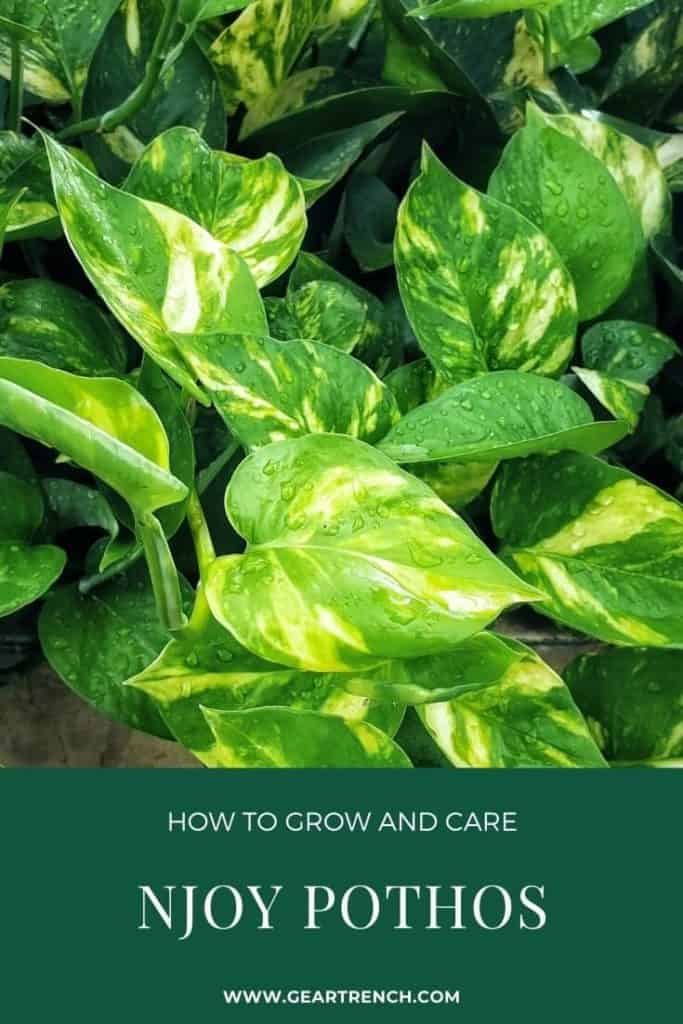
Don’t forget to share this post


